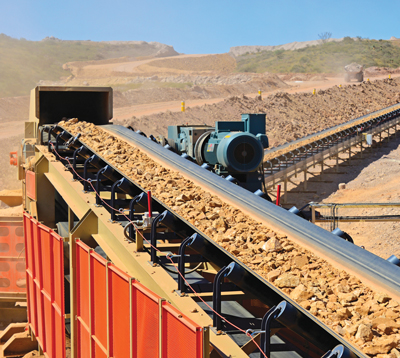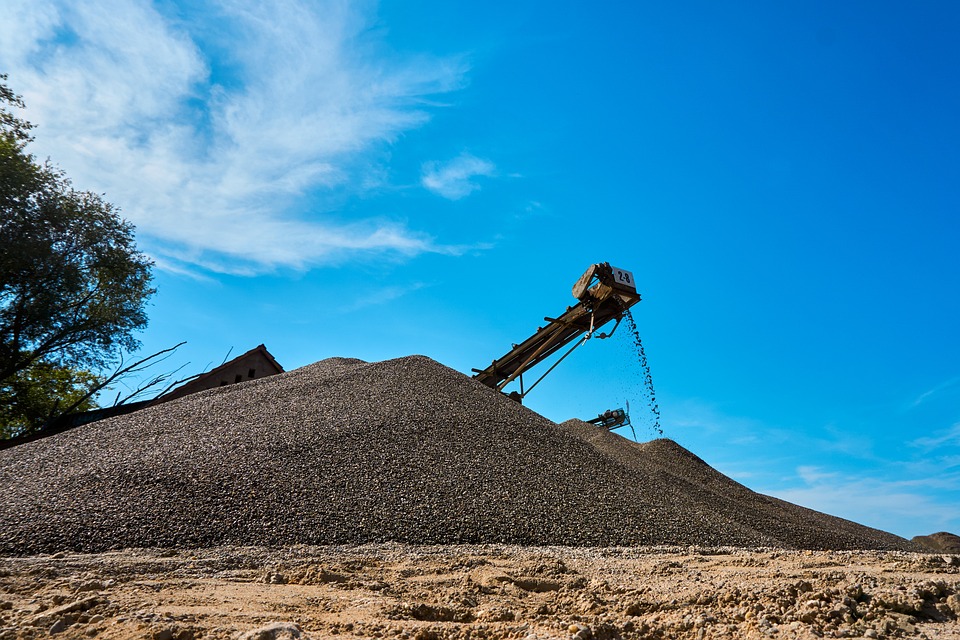
Tubular Belt Conveyor: Revolutionizing Bulk Material Handling

Introduction to Tubular Belt Conveyors
Tubular belt conveyors, also known as pipe conveyors, are an advanced solution for bulk material handling, designed to transport materials efficiently while minimizing environmental impact. By enclosing materials in a cylindrical belt, these systems prevent spillage, dust emissions, and contamination, making them ideal for industries like mining, cement, power generation, and chemical processing. This article, crafted by material handling experts, explores the technical features, applications, and benefits of tubular belt conveyors, offering valuable insights for professionals seeking reliable and sustainable conveying solutions.
How Tubular Belt Conveyors Work
Tubular belt conveyors function by folding a flat conveyor belt into a closed, pipe-like structure after material loading. Hexagonal idler roller arrangements maintain the tubular shape during transport, and the belt opens at the discharge point to release the material before reforming for the return journey.
Key Components
Conveyor Belt: High-strength rubber or synthetic materials designed for abrasion resistance and environmental durability.
Idler Rollers: Hexagonal roller sets that shape and support the belt.
Drive System: Motors, gearboxes, and drive pulleys for efficient power transmission.
Tensioning Device: Maintains belt tension to prevent misalignment or sagging.
Frame and Support Structure: Robust steel framework supporting complex paths.
Cleaning Systems: Scrapers and brushes to ensure belt hygiene and prevent material buildup.

Advantages of Tubular Belt Conveyors
Tubular belt conveyors outperform traditional flat belt conveyors in several ways:
Environmental Protection: Enclosed design minimizes dust and spillage, ensuring compliance with environmental regulations.
Flexible Routing: Handles sharp curves, steep inclines, and 3D paths, reducing transfer points.
Material Protection: Shields materials from moisture, wind, and contaminants.
High Efficiency: Supports long-distance transport with low energy consumption.
Versatility: Handles diverse materials like coal, ore, cement, and chemicals with customizable belt options.
Table 1: Comparison of Tubular Belt Conveyors vs. Traditional Belt Conveyors
| Feature | Tubular Belt Conveyor | Traditional Belt Conveyor |
|---|---|---|
| Dust Control | Fully enclosed, minimal emissions | Open design, prone to dust generation |
| Material Spillage | Virtually eliminated | Frequent spillage risks |
| Route Flexibility | Supports curves and inclines | Limited to straight or gentle curves |
| Environmental Compliance | High, meets strict regulations | Moderate, requires additional dust control |
| Maintenance | Fewer transfer points, lower maintenance | More transfer points, higher maintenance |
| Material Protection | Shields from external elements | Exposed to weather and contaminants |

Applications Across Industries
Tubular belt conveyors are widely used due to their adaptability:
Mining: Transports ores, coal, and aggregates over long distances with minimal environmental impact.
Cement Industry: Handles limestone, clinker, and gypsum in dust-free conditions.
Power Plants: Conveys coal and ash, reducing air pollution.
Port and Logistics: Facilitates bulk material transfer from ships to storage.
Chemical and Food Processing: Ensures contamination-free transport of fertilizers or grains.
Table 2: Industry-Specific Applications and Belt Requirements
| Industry | Material Handled | Belt Type | Key Requirements |
|---|---|---|---|
| Mining | Coal, Ore, Aggregates | Abrasion-resistant rubber | High tensile strength, durability |
| Cement | Limestone, Clinker, Gypsum | Heat-resistant rubber | Heat resistance, dust-free operation |
| Power Plants | Coal, Ash | Flame-retardant rubber | Fire safety, low emissions |
| Ports | Bulk Commodities | Heavy-duty synthetic | High capacity, weather resistance |
| Chemical/Food | Fertilizers, Grains | Food-grade or chemical-resistant | Hygiene, contamination prevention |
Technical Considerations for Implementation
To ensure optimal performance, consider the following:
Belt Selection: Match belt material to the material’s properties (e.g., abrasion, temperature, or chemical resistance).
Route Design: Leverage the system’s ability to navigate complex layouts with curves and inclines.
Maintenance: Regular checks on idlers, belts, and cleaning systems to minimize downtime.
Safety Features: Include emergency stop switches, misalignment sensors, and dust suppression systems.
Energy Efficiency: Use variable frequency drives (VFDs) and energy-efficient motors.

Why Choose Tubular Belt Conveyors?
Tubular belt conveyors align with modern demands for sustainability and efficiency. Their enclosed design reduces environmental impact, making them ideal for sensitive areas. They also lower costs by eliminating transfer stations and reducing maintenance needs.
Compliance with Industry Standards
Designed to meet ISO, DIN, and CEMA standards, tubular belt conveyors ensure global compatibility and reliable performance.
Case Study: Tubular Belt Conveyor in Mining
A copper mine in South America deployed a 5-km tubular belt conveyor to transport ore across mountainous terrain with a 15-degree incline and multiple curves. The system reduced dust emissions by 90% compared to traditional conveyors, ensuring compliance with environmental regulations. Maintenance costs dropped by 20% due to fewer transfer points and a durable belt design.
Future Trends in Tubular Belt Conveyors
Advancements in automation and sustainability are shaping the future of tubular belt conveyors:
Smart Systems: IoT and PLC integration for real-time monitoring of performance and maintenance.
Energy Optimization: Lightweight belts and efficient drives to reduce costs and emissions.
Modular Designs: Scalable systems for flexible adaptation to operational changes.
Conclusion
Tubular belt conveyors are a transformative solution for bulk material handling, offering environmental benefits, operational efficiency, and versatility. From mining to food processing, these systems deliver reliable performance while meeting modern sustainability goals. Contact a trusted material handling provider or engineering specialist to explore how tubular belt conveyors can enhance your operations.
 Gold Mining Belt Conveyors: Design, Selection, Engineering Calculations & 2025 Technology Guide
Gold Mining Belt Conveyors: Design, Selection, Engineering Calculations & 2025 Technology Guide
 The Ultimate Guide to Material Handling Belt Conveyors in Mining, Aggregates, Quarries & Cement Plants
The Ultimate Guide to Material Handling Belt Conveyors in Mining, Aggregates, Quarries & Cement Plants
 Tubular Belt Conveyor: Revolutionizing Bulk Material Handling
Tubular Belt Conveyor: Revolutionizing Bulk Material Handling
 Understanding the Cost of Conveyor Belts: A Comprehensive Guide for Businesses
Understanding the Cost of Conveyor Belts: A Comprehensive Guide for Businesses
 How to Choose the Best Mining Conveyor Idlers for Your Operation
How to Choose the Best Mining Conveyor Idlers for Your Operation
 Daily Idler Maintenance Checklist: A Comprehensive Guide
Daily Idler Maintenance Checklist: A Comprehensive Guide
 How to Choose the Right Belt Conveyor Company: A 2025 Buyer’s Guide
How to Choose the Right Belt Conveyor Company: A 2025 Buyer’s Guide
 Conveyor Idlers Installation Guide: From Beginner to Expert
Conveyor Idlers Installation Guide: From Beginner to Expert


